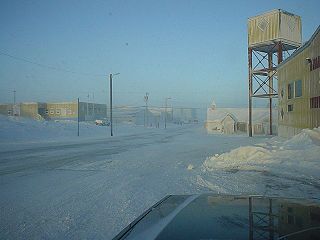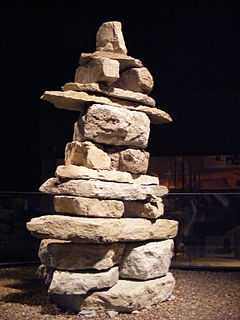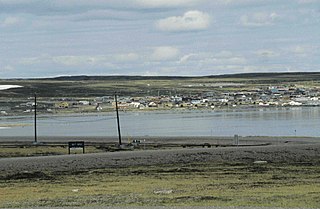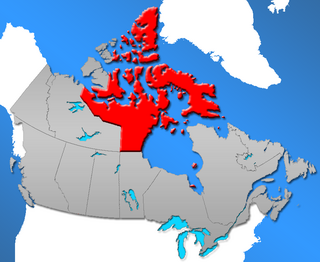| Chesterfield Inlet | |
|---|---|
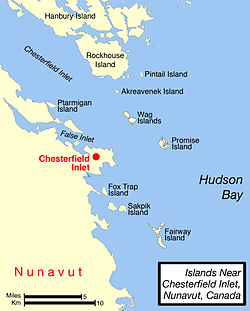 Map of Chesterfield Inlet area. | |
| Location | Hudson Bay |
| Coordinates | 63°32′24″N091°04′48″W / 63.54000°N 91.08000°W Coordinates: 63°32′24″N091°04′48″W / 63.54000°N 91.08000°W |
| River sources | Thelon River |
| Basin countries | Canada |
| Settlements | Chesterfield Inlet, Nunavut |
Chesterfield Inlet (Inuit: Igluligaarjuk) [1] is an inlet in Kivalliq Region, Nunavut, Canada. It is an arm of northwestern Hudson Bay, and the end point of the Thelon River after its passage through Baker Lake. Cross Bay, a large widening of the inlet, occurs 30 km (19 mi) east of Baker Lake. There are several islands located within the inlet.

The Inuit languages are a closely related group of indigenous American languages traditionally spoken across the North American Arctic and to some extent in the subarctic in Labrador. The related Yupik languages are spoken in western and southern Alaska and in the far east of Russia, but are severely endangered in Russia today and spoken only in a few villages on the Chukchi Peninsula. The Inuit live primarily in three countries: Greenland, Canada, and the United States.

An inlet is an indentation of a shoreline, usually long and narrow, such as a small bay or arm, that often leads to an enclosed body of salt water, such as a sound, bay, lagoon, or marsh.

The Kivalliq Region is an administrative region of Nunavut, Canada. It consists of the portion of the mainland to the west of Hudson Bay together with Southampton Island and Coats Island. The regional seat is Rankin Inlet. The population was 10,413 in the 2016 Census, an increase of 16.3% from the 2011 Census.
The first European here may have been William Moor in 1747 who sent boat parties about 60 miles up the inlet. In 1762 William Christopher followed the whole inlet to Baker Lake.
William Moor was a British sailor and explorer associated with the Hudson's Bay Company (HBC) and the annual supply ships to the bay area.
The Inuit hamlet of the same name, Chesterfield Inlet, is situated near the waterway's mouth. In previous times, the area was home to Aivilingmiut and Qaernermiut.
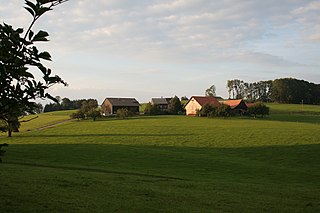
A hamlet is a small human settlement. In different jurisdictions and geographies, hamlets may be the size of a town, village or parish, be considered a smaller settlement or subdivision or satellite entity to a larger settlement. The word and concept of a hamlet have roots in the Anglo-Norman settlement of England, where the old French hamlet came to apply to small human settlements. In British geography, a hamlet is considered smaller than a village and distinctly without a church.

Chesterfield Inlet is a hamlet located on the western shore of Hudson Bay, Kivalliq Region, in Nunavut Canada at the mouth of Chesterfield Inlet. Igluligaarjuk is the Inuktitut word for "place with few houses", it is the oldest community in Nunavut. The community is served by air, Chesterfield Inlet Airport, and by an annual supply known as sealift.

The Aivilingmiut are an Inuit people who traditionally have resided north of Hudson Bay in Canada, near Naujaat, Chesterfield Inlet, Southampton Island, and Cape Fullerton. They are descendants of the Thule people and are considered a southern subgroup of the Iglulik Inuit. In the late 19th century, they migrated south to work among American whalers hunting in Hudson Bay.

